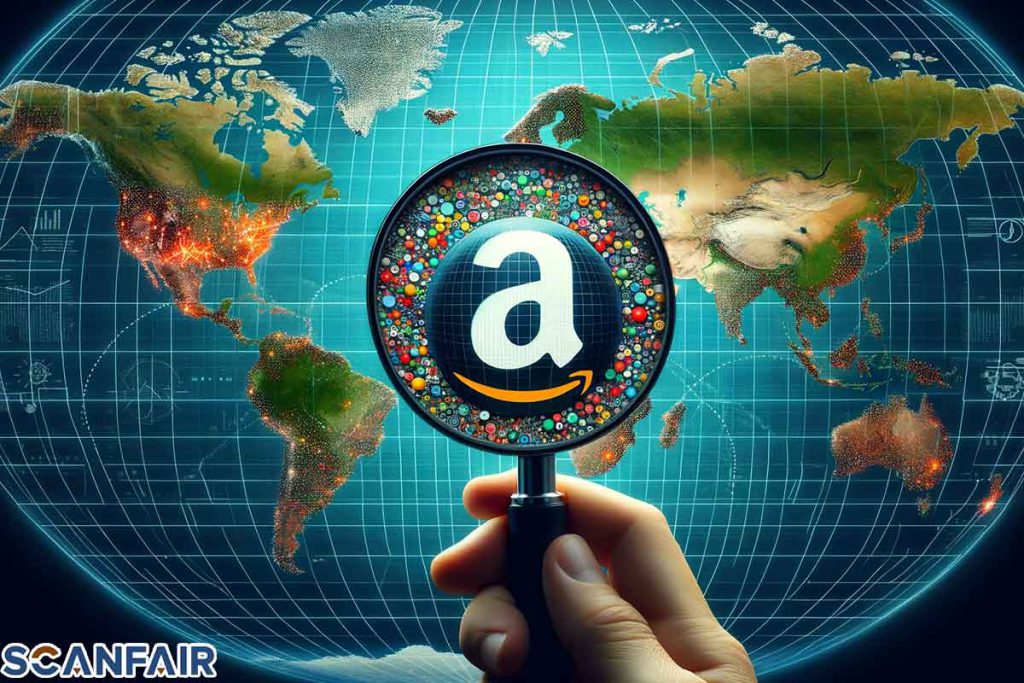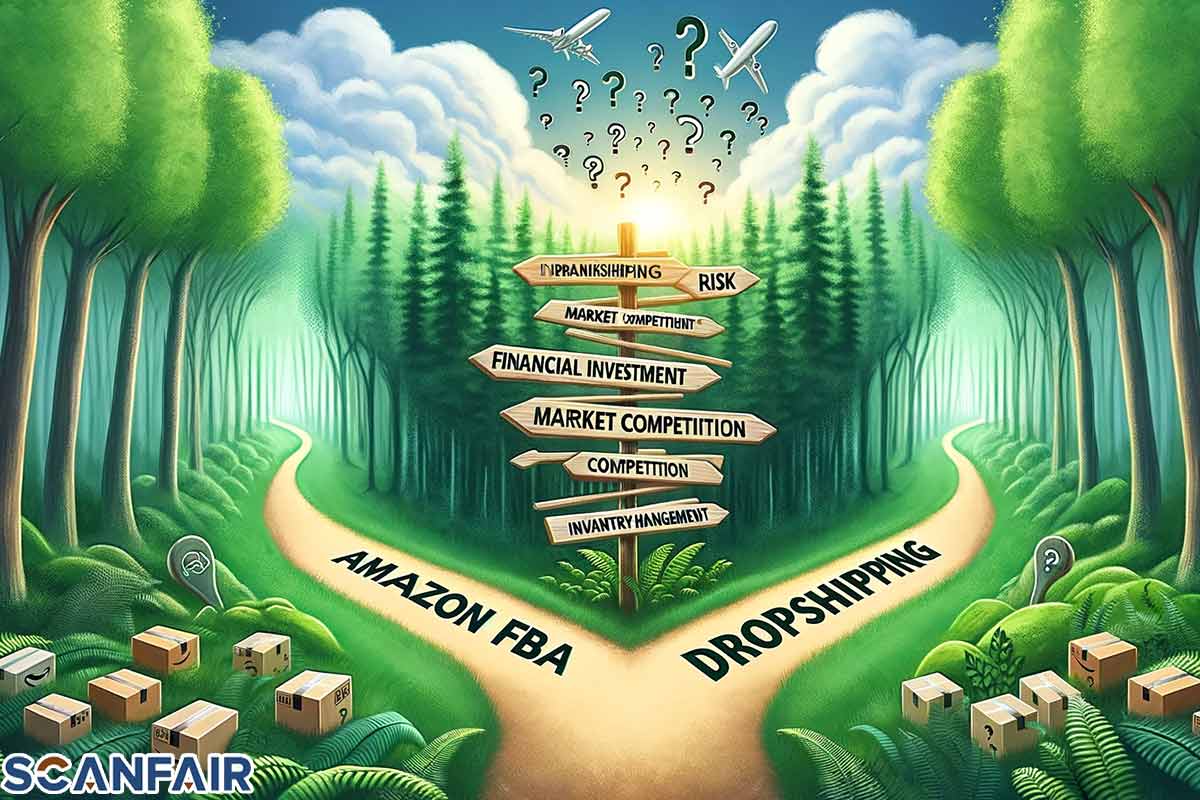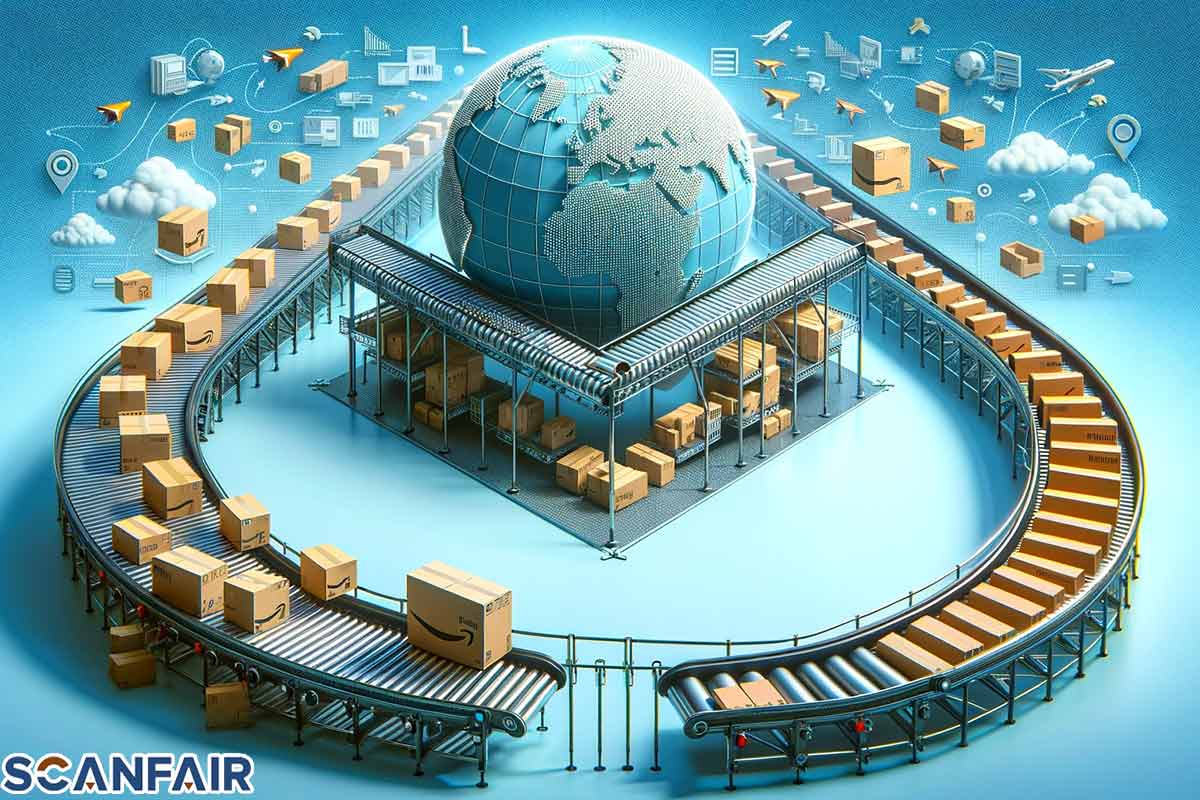In the dynamic world of e-commerce, entrepreneurs are constantly exploring efficient and profitable business models. Among the most popular are Amazon FBA (Fulfillment by Amazon) and Dropshipping, each offering unique pathways to success in the online retail space. This comprehensive guide aims to dissect and compare these two models, providing a clear and detailed understanding of how they operate. Whether you’re a budding entrepreneur or an established business owner looking to diversify, understanding the nuances, benefits, and challenges of Amazon FBA and Dropshipping is crucial. We delve into the operational mechanisms, financial implications, scalability, and risk factors of both models, equipping you with the knowledge to make an informed decision. This guide serves as your go-to resource for navigating the complexities of Amazon FBA and Dropshipping, helping you determine which model aligns best with your business vision and goals. In the essay, we at Scan Fair will talk more about this topic.
Understanding Amazon FBA
Amazon FBA, or Fulfillment by Amazon, is a service designed for sellers who wish to streamline their online sales processes. By opting into FBA, sellers send their products to Amazon’s fulfillment centers. Once a customer places an order, Amazon handles the storage, packing, shipping, customer service, and returns for these items. This model is particularly beneficial for sellers looking to minimize operational hassles and leverage Amazon’s vast distribution network.
Explanation of What Amazon FBA is and How it Works
In Amazon FBA, sellers create listings for their products on Amazon. When a product is sold, Amazon’s fulfillment centers take charge of the order. The product is picked from the seller’s inventory stored in these centers, packed, and shipped directly to the customer. Amazon also manages customer support and returns, providing a comprehensive service. This system allows sellers to focus on product selection and business growth while Amazon handles the logistics. The fees for FBA are based on product size and weight, offering a scalable solution for businesses of all sizes. We have already reviewed Fba vs. Fbm you can refer to these pages for more information.
Pros and Cons of Amazon FBA
Amazon FBA offers a blend of advantages and challenges that are crucial for sellers to understand before diving in. It’s a model that has revolutionized e-commerce for many, yet it may not be the perfect fit for every business.
Pros & Cons of Amazon FBA Explained
Advantages:
- Logistics and Shipping Expertise: Amazon FBA takes the complexity out of shipping and logistics. Products are stored, packed, and shipped by Amazon, ensuring fast and reliable delivery.
- Customer Trust and Reach: Leveraging Amazon’s brand boosts credibility and exposure, potentially increasing sales.
- Customer Service and Returns Management: Amazon handles customer inquiries and returns, reducing the workload for sellers.
Disadvantages:
- Costs: FBA fees can be significant, including storage, fulfillment, and additional long-term storage fees, impacting profit margins.
- Inventory Management: Sellers need to keep a close eye on inventory levels. Overstocking leads to higher fees while understocking results in lost sales opportunities.
- Less Brand Control: Using FBA means relying heavily on Amazon’s branding, which can limit sellers’ ability to establish their own brand identity.
- Product Restrictions: Certain products have restrictions or cannot be sold through FBA, requiring sellers to be vigilant about Amazon’s changing policies.
Exploring Dropshipping
Dropshipping is a business model where online retailers sell products without stocking them. When a customer places an order, the retailer buys the item from a third party and has it shipped directly to the customer. This model is appealing due to its low overhead and ease of setup, making it a popular choice for entrepreneurs entering the e-commerce space.
A Clear Description of Dropshipping and Its Operational Model
In dropshipping, the retailer acts as a middleman, focusing on marketing and customer relations rather than inventory management. When an order is received, the retailer purchases the product from a supplier, who then ships it directly to the customer. This eliminates the need for the retailer to maintain a warehouse or handle physical products, significantly reducing upfront costs. The retailer’s profit is the difference between the wholesale price paid to the supplier and the retail price charged to the customer. This model allows for a wide range of products to be offered without the risk of unsold inventory, providing flexibility and scalability in product offerings.
Pros and Cons of Dropshipping
Dropshipping, a model where sellers act as intermediaries between suppliers and customers, offers a unique approach to online retailing. Its operational simplicity and low entry barriers make it a tempting choice, but it’s not without its challenges. Understanding these pros and cons is vital for entrepreneurs considering dropshipping as a business model.
Dropshipping Benefits & Challenges Detailed
Advantages:
- Low Overhead Costs: Without the need for inventory, dropshipping significantly reduces the costs of storage and inventory management.
- Flexibility in Product Selection: Sellers can offer a diverse range of products without purchasing them upfront.
- Ease of Starting and Scaling: Dropshipping is easy to start and can be scaled quickly, making it ideal for new entrepreneurs.
Disadvantages:
- Lower Profit Margins: The ease of entry into dropshipping often leads to high competition, which can drive down profit margins.
- Dependency on Third-Party Suppliers: Sellers are reliant on suppliers for product quality and shipping, which can impact customer satisfaction.
- Less Control Over Shipping and Inventory: Limited control over inventory can lead to issues with stock availability and longer shipping times.
- Challenges in Branding: Building a unique brand can be challenging when products are directly shipped from suppliers.
Cost Comparison: Amazon FBA vs. Dropshipping
Choosing between Amazon FBA and Dropshipping hinges significantly on their respective cost structures. Both models have unique financial implications, from initial setup to ongoing operational expenses. Understanding these costs is crucial for entrepreneurs to make an informed decision that aligns with their financial capabilities and business goals.
Cost Analysis: Amazon FBA vs. Dropshipping
Amazon FBA Costs:
- Startup Costs: This can include product sourcing, shipping to Amazon’s fulfillment centers, and Amazon’s account setup fees.
- Ongoing Expenses: Regular fees include storage costs, fulfillment fees per unit sold, and additional long-term storage fees for unsold items.
Dropshipping Costs:
- Startup Costs: Generally lower, primarily involving website setup and domain costs.
- Ongoing Expenses: Costs mainly revolve around the purchase price of goods from suppliers, website maintenance, and marketing expenses.
Amazon FBA typically involves higher startup costs due to inventory and shipping requirements. However, it offers a more hands-off approach to fulfillment and shipping. Dropshipping, on the other hand, has lower initial costs and offers more flexibility in product offerings but can have lower profit margins due to competitive pricing and potential reliance on paid advertising for traffic generation.
Logistics and Supply Chain Management
The handling of logistics and supply chain is a crucial aspect differentiating Amazon FBA from Dropshipping. Each model offers a distinct approach to managing these vital components of e-commerce, impacting everything from efficiency to customer satisfaction. Understanding these differences is key for sellers in choosing the model that best fits their business strategy.
Logistics: Amazon FBA vs. Dropshipping
Amazon FBA Logistics:
- Inventory Management: Sellers send their products to Amazon’s fulfillment centers, where Amazon manages storage and inventory tracking.
- Shipping and Delivery: Amazon handles the packaging, shipping, and delivery of products, often offering faster delivery times due to its vast logistics network.
- Returns and Customer Service: Amazon also manages returns and customer service, providing a consistent experience for customers.
Dropshipping Logistics:
- No Inventory Storage: Sellers do not store products; instead, suppliers directly ship products to customers.
- Supplier-Dependent Shipping: Shipping times and methods depend on the suppliers, which can vary greatly and affect delivery consistency.
- Customer Service Challenges: Sellers manage customer service and returns, which can be complicated by not having direct control over shipping and inventory.
Market Reach and Customer Base
The extent of market reach and the nature of the customer base are pivotal factors distinguishing Amazon FBA from Dropshipping. Each model offers different pathways to access and engage with customers, influencing the potential for sales and business growth. Understanding these aspects helps sellers tailor their strategies to maximize reach and effectively target their customer base.
Market Reach: FBA vs. Dropshipping Compared
Amazon FBA Market Reach:
- Global Platform: Amazon’s massive global presence provides sellers with a vast, diverse customer base.
- Customer Trust: Amazon’s established brand and customer loyalty mean sellers can tap into a pool of customers who are more likely to trust and purchase from Amazon-listed products.
Dropshipping Market Reach:
- Custom Marketing Strategies: Dropshipping allows sellers to use various digital marketing strategies to reach customers worldwide. However, this reach depends heavily on the effectiveness of these strategies.
- Targeted Niches: Dropshippers can target specific niches, tailoring their products and marketing to suit unique customer segments. This can lead to a more engaged, albeit smaller, customer base.
Ease of Scaling Your Business
Scaling a business is a crucial aspect of long-term success in e-commerce. Both Amazon FBA and Dropshipping offer distinct paths for growth, but they come with different challenges and opportunities for scalability. Understanding how each model facilitates business expansion is key for entrepreneurs planning for future growth.
Scalability of FBA vs. Dropshipping
Amazon FBA Scalability:
- Robust Infrastructure: Amazon’s extensive logistics network can handle large volumes of sales, making scaling relatively straightforward.
- Inventory Management: As sales increase, managing larger inventory becomes a challenge, requiring more investment and space in Amazon’s fulfillment centers.
- Brand Development: While Amazon provides a vast customer base, standing out among competitors can be challenging, impacting the ability to scale.
Dropshipping Scalability:
- Flexibility in Product Offerings: Dropshipping allows the easy addition of new products without inventory risks, aiding scalability.
- Marketing Dependency: Scaling in dropshipping often hinges on successful marketing and finding new customer segments.
- Supplier Reliance: As sales grow, maintaining product quality and consistent delivery can be challenging due to reliance on third-party suppliers.
Risk Assessment and Management
In the e-commerce arena, both Amazon FBA and Dropshipping come with their own set of risks. Understanding these risks is crucial for effective management and mitigation strategies. This knowledge not only prepares entrepreneurs for potential challenges but also aids in making informed decisions to ensure the longevity and profitability of their businesses.
Risk Analysis: FBA vs. Dropshipping
Amazon FBA Risks:
- Inventory Risk: Overstocking can lead to high storage fees, while understocking may result in lost sales.
- Market Dependence: Being reliant on Amazon means susceptibility to changes in policies, fees, and competition within the platform.
- Account Health: Non-compliance with Amazon’s strict policies can lead to account suspension, impacting sales and brand reputation.
Dropshipping Risks:
- Supplier Reliability: Dependence on third-party suppliers for product quality and fulfillment can lead to inconsistencies and customer dissatisfaction.
- Lower Margins and High Competition: The ease of starting a dropshipping business results in high competition, often leading to lower profit margins.
- Customer Service Challenges: Handling customer service without direct control over inventory or shipping can be challenging, potentially affecting customer trust and loyalty.
Success Stories: Real-World Examples
The effectiveness of Amazon FBA and Dropshipping models is best illustrated through real-world success stories. These narratives not only showcase the potential of each model but also provide valuable insights and inspiration for entrepreneurs looking to embark on similar journeys.
Success Stories in FBA & Dropshipping
Amazon FBA Success Stories:
- Brand A: Started as a small family business, they utilized Amazon FBA to expand their reach. They capitalized on Amazon’s global presence to sell unique kitchen gadgets. Their success is attributed to quality products, excellent customer service, and leveraging Amazon’s Prime shipping.
- Brand B: A tech accessories company that experienced exponential growth by offering high-quality, niche products. They optimized their listings for Amazon’s search engine, resulting in increased visibility and sales.
Dropshipping Success Stories:
- Store C: An online store specializing in eco-friendly products, they leveraged dropshipping to offer a wide range of items without inventory risks. Their focus on targeted digital marketing strategies led to a substantial increase in sales.
- Store D: Started as a passion project, this apparel store used dropshipping to test the market. By identifying trending products and using social media marketing, they rapidly grew their customer base and revenue.
These examples highlight how both Amazon FBA and Dropshipping can be effectively utilized to build successful, scalable businesses. They underscore the importance of market research, quality service, and strategic marketing in e-commerce success.
Choosing the Right Model for Your Business Needs
Selecting between Amazon FBA and Dropshipping is a critical decision that hinges on various factors unique to each business. The right choice depends on individual business goals, resources, and the level of control an entrepreneur desires. This section provides practical guidelines to help you evaluate which model aligns best with your business objectives and resources.
Choosing FBA or Dropshipping: A Guide
- Assess Initial Investment Capabilities: Amazon FBA requires a larger upfront investment for inventory and storage fees, making it suitable for those with more startup capital. Dropshipping, with its lower initial costs, is ideal for those with limited funds.
- Consider Control Over Operations: If you prefer more control over shipping and customer service, Dropshipping might be the better option. Amazon FBA outsources these aspects, offering convenience at the cost of direct control.
- Evaluate Your Risk Appetite: Amazon FBA involves more financial risk due to inventory management, whereas Dropshipping offers a lower-risk model due to no upfront inventory purchase.
- Analyze Market and Product Type: Certain products and markets may be better suited for one model over the other. High-volume, fast-moving products often fare well with Amazon FBA, while niche products with unpredictable demand might be better for Dropshipping.
- Long-term Goals and Scalability: Consider your long-term business goals. If rapid scaling is a priority, Amazon FBA’s infrastructure might be more beneficial, while Dropshipping allows for more flexibility and gradual scaling.
By thoroughly evaluating these factors, you can make a more informed decision that aligns with your business strategy and increases the likelihood of success.
Conclusion
In conclusion, choosing between Amazon FBA and Dropshipping hinges on personal business goals, financial capacity, and desired level of involvement in logistics and customer relations. Amazon FBA offers a comprehensive, hands-off approach but requires more upfront investment and commitment. Dropshipping, conversely, provides flexibility and lower startup costs but demands more active involvement in marketing and customer service. Both models have proven successful for various entrepreneurs, and understanding their distinct dynamics is key to making an informed decision. Ultimately, the right choice aligns with your business objectives, resources, and vision for growth in the competitive landscape of e-commerce.
FAQs: Common Questions Answered
- Is Amazon FBA or Dropshipping more profitable?
- Profitability depends on various factors like product selection, market competition, and operational efficiency. Amazon FBA can offer higher margins with volume sales but involves more upfront costs. Dropshipping typically has lower margins but less financial risk.
- How much capital is needed to start with Amazon FBA or Dropshipping?
- Amazon FBA requires more capital for inventory and storage fees, often a few thousand dollars. Dropshipping can be started with less capital, usually a few hundred dollars, mainly for website setup and marketing.
- Which model is better for beginners in e-commerce?
- Dropshipping is often recommended for beginners due to its lower startup costs and risk. However, Amazon FBA might be suitable for those with more capital and a desire for a more hands-off approach.
- Can I combine both Amazon FBA and Dropshipping?
- Yes, some entrepreneurs use both models to diversify their business strategy. This approach can balance the benefits and risks of each model but requires careful management.
- How do I handle customer service in Dropshipping?
- In Dropshipping, the retailer is responsible for customer service. This involves communicating with customers, handling inquiries, and resolving issues, often in coordination with suppliers.
- What are the key factors for success in Amazon FBA?
- Success in Amazon FBA relies on choosing the right products, effective inventory management, optimizing listings for Amazon’s search engine, and providing excellent customer service.
- How quickly can I expect to make a profit with Dropshipping?
- The timeline to profitability in Dropshipping varies. Initial profits can be seen in a few months, but it often takes longer to build a sustainable and profitable business.
- Are there any hidden costs in Amazon FBA or Dropshipping?
- Both models have potential hidden costs. Amazon FBA may have unexpected long-term storage fees, while Dropshipping might involve costs related to quality issues or supplier reliability.
- How do I choose the right products for either model?
- Research market trends, customer demand, and competition. For Amazon FBA, focus on products with high volume and low competition. In Dropshipping, look for niche products with a dedicated customer base.
- Can I operate an Amazon FBA or Dropshipping business from anywhere?
- Yes, both models allow for remote operation. However, understanding the market you are selling to and having reliable internet access is crucial for managing your business effectively.




